Welding stainless steel to mild steel can be a challenging task, as these two metals have different properties and react differently to heat. However, with the right technique and equipment, it is possible to create a strong and durable bond between them.
In this article, we will explore the ins and outs of MIG welding stainless steel to mild steel, including the necessary tools and safety precautions.
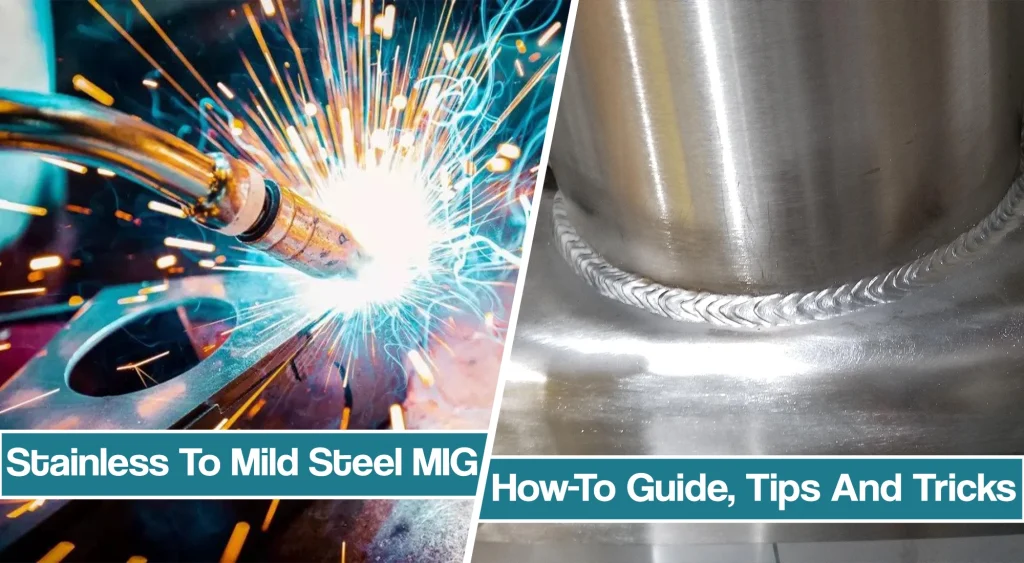
Whether you’re a professional welder or a DIY enthusiast, you’ll find practical tips and tricks on how to MIG weld stainless steel to mild steel to achieve a successful weld.
Where And Why Is Welding Stainless Steel To Mild Steel Used?
Welding stainless steel to mild steel is a common practice that is used in a variety of industries and applications.
The process is used to join dissimilar metals together, combining the strength of stainless steel with the affordability and malleability of mild steel. Common uses of this welding process include joining stainless steel part, piping systems, and food processing equipment.
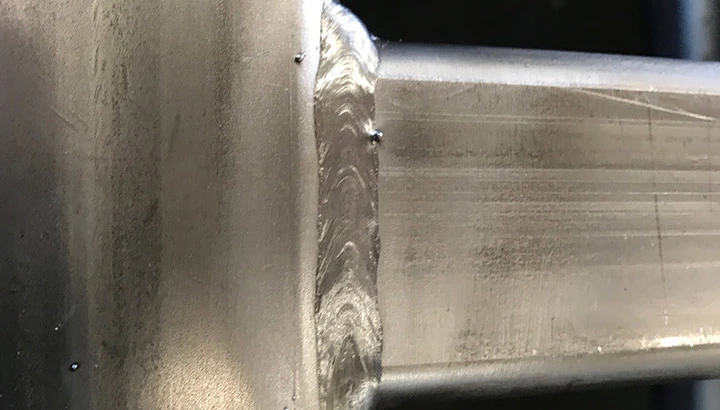
In the automotive industry, welding stainless steel to mild steel is used to attach exhaust components to a vehicle’s frame. The exhaust system is composed of a variety of metals, including stainless steel and mild steel. Stainless steel is often used for its corrosion resistance, while mild steel provides strength and durability. Welding these two materials together allows for a secure connection that can withstand the heat and pressure generated by an engine’s exhaust system.
The food processing industry also makes use of this welding technique. Many pieces of food production equipment require the use of both stainless steel and mild steel components. This includes conveyor belts, ovens, mixers, and other machinery. Welding these components together ensures that food-grade materials are used throughout the entire system, preventing contamination and extending the life of the equipment.
Similarly, welded stainless steel-mild steel piping systems are widely used in various industries such as chemical plants, refineries, energy plants, and water treatment facilities. The combination of these two materials allows for pipes with superior strength and corrosion resistance that can withstand extreme temperatures and harsh conditions.
What Are Weldability and Potential Issues Of Welding Stainless to Miled Steel?
The potential issues that arise when welding stainless steel to mild steel are a result of the different properties of each weld metal. Stainless steel is a ferritic alloy containing chromium, while mild steel is a ferrous alloy containing iron.
As a result, stainless steel has higher corrosion resistance and higher heat resistance than mild steel. When welding these two materials together, there is a risk of galvanic corrosion due to the different electrochemical potentials of each material.
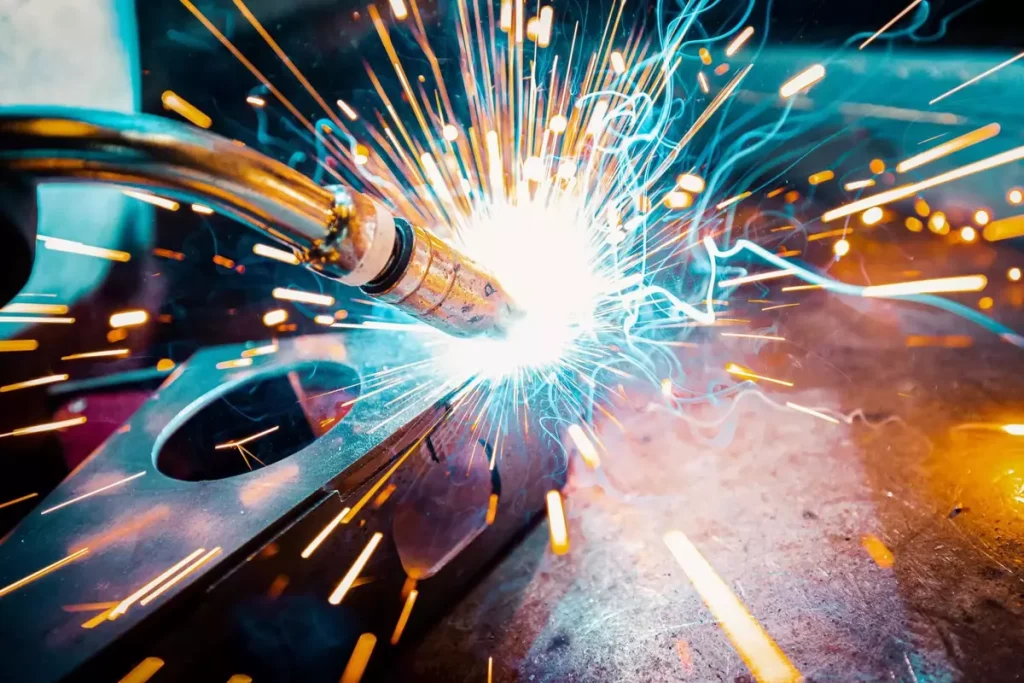
In addition, stainless steel has a higher melting point than mild steel, so welding it to mild steel requires a higher heat input. This can cause thermal stresses on the joint between the two materials, potentially leading to hot cracking and warping. In order to prevent these stresses, the weld area must be preheated before welding and post-heated after welding to reduce the thermal shock experienced by the joint.
Another issue that can arise when welding stainless steel to mild steel is contamination due to intermetallic formation. Ferritic stainless steel is magnetic and has a lower nickel content, making it more difficult to weld. The different metals in each material can create an intermetallic compound at the joint, which can be brittle and weak. If not properly cleaned prior to welding, this contamination can lead to poor welds and weak joints. It is, therefore, important that the weld area is thoroughly cleaned before welding in order to ensure good weld, high-quality welds, and strength.
How To MIG Weld Stainless Steel To Mild Steel – Overview
When MIG welding stainless steel to mild steel, it is important to first choose an appropriate filler metal that is suitable for both materials and base metal. ER308L is a common choice for this purpose.
Next, the surfaces of the metals being welded must be cleaned thoroughly to ensure a strong bond. This can be achieved by using a wire brush or grinder to remove any contaminants such as oil, grease, or rust.
Once the metals are properly cleaned, the MIG welding machine must be set up with the appropriate settings for the filler metal and the thickness of the metals being welded. A shielding gas, such as a mixture of argon and carbon dioxide, should be used to protect the weld from atmospheric gases.
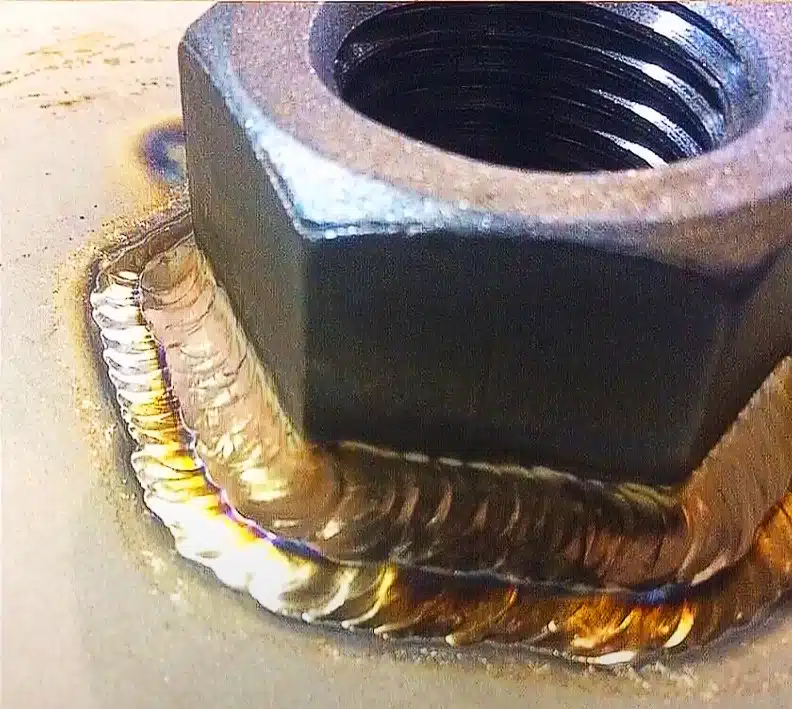
The metals should then be positioned properly so that the joint is held tightly together and in the correct position for welding. The welding process can then begin by laying down a tack weld to hold the metals in place, followed by welding along the joint using a consistent back-and-forth motion. It is important to control the heat input to prevent overheating of the metals.
After the welding is complete, the weld should be inspected for any defects such as cracks or porosity. If any defects are found, the weld may need to be reworked. Finally, the surface of the weld should be cleaned using a wire brush or grinder to remove any slag or spatter.
Weld Metal Preparation For fusing to different metal alloys
Weld preparation is a crucial step when MIG welding stainless steel to mild steel to ensure a strong and durable welded joint. Proper preparation involves cleaning and preparing the surfaces of the metals being welded to ensure good penetration, adhesion, and fusion of the weld.
The first step in weld preparation is to remove any contaminants from the surfaces of the metals being welded. This can be done by using a wire brush orangle grinder or grinding wheel to remove any oil, grease, or rust from the surfaces. If the metals are heavily contaminated, a solvent or degreaser may be necessary to remove the contaminants.
MIG Filler Wire Required To Weld Stainless Steel to Mild Steel
When welding stainless steel to mild steel, it is important to use a filler wire that is suitable for both materials to achieve a strong and durable weld joint. The most commonly used filler wire for this purpose is ER308L, but some use common steel wire, which is not always the best choice.
ER308L is a type of austenitic stainless steel wire that contains 19-21% of chromium oxide and 9-11% nickel. This filler material is designed specifically for welding stainless steel to mild steel and is suitable for use in a wide range of welding applications.
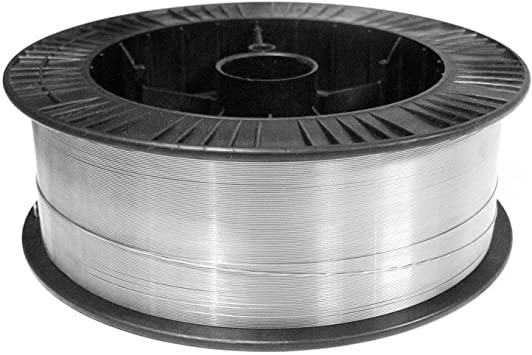
The main advantage of using ER308L filler wire is its high corrosion resistance, which is important when welding stainless steel to mild steel. This resistance to corrosion helps to prevent the formation of rust and other types of corrosion on the welded joint, which can compromise the strength and durability of the weld zone joint.
Another advantage of the ER308L wire is its versatility. It can be used to weld a wide range of stainless steel alloys and thicknesses, as well as mild steel. This makes it a popular choice for a variety of welding applications, including automotive, construction, and industrial welding.
What Shielding Gas Should you use for MIG Welding Stainless to mild steel?
A commonly used shielding gas mixture for welding stainless steel to mild steel is a 98% argon and 2% CO2 blend. This mixture provides the necessary arc stability for welding stainless steel while also improving penetration into the mild steel. The CO2 in the mixture promotes the formation of a narrower, more focused arc, which helps to penetrate the mild steel and create a strong bond with the stainless steel.
Argon-based shielding gases are typically used for welding stainless steel because they provide good arc stability and are effective at protecting the weld pool from atmospheric contamination. The exact composition of the shielding gas mixture may vary depending on the specific welding application and the materials being used. In some cases, other gases, such as helium or nitrogen, may be added to the tri mix gas to achieve specific welding characteristics.
Welding Technique When MIG Welding Stainless Steel to Steel
When MIG welding stainless steel to mild steel, the welding technique used is similar to that used for welding mild steel, with some adjustments to welding parameters to achieve proper penetration and fusion of the metals.
The arc length should be shorter than when welding mild steel, as this promotes deeper penetration into thick metals such as mild steel.
This can be achieved by reducing the distance between the welding gun and the workpiece.
The travel speed should be slower than when welding mild steel, as this allows more time for the heat to be absorbed by the metals and promotes proper fusion. The travel speed can be adjusted by moving the welding gun more slowly along the joint.

The welding angle should be slightly steeper than when welding mild steel, as this helps to direct the heat toward the mild steel and promotes deeper penetration. A welding angle of around 10 to 15 degrees is typically recommended. The stick-out distance, or the distance between the end of the welding wire and the workpiece, should be shorter than when welding mild steel. This helps to maintain a stable arc and promotes proper penetration. A stick-out distance of around 1/4 to 3/8 inches is recommended.
Post Weld Treatment
After completing the MIG welding process on stainless to mild steel, it is important to properly clean and treat the weld area to ensure the final product is of high quality and free from defects. After completing the weld, use a wire brush or grinding tool to remove any spatter or slag from the weld area. This will help to ensure a clean surface for subsequent treatment steps post-weld cleanup.
Stainless steel is susceptible to corrosion, particularly after you weld mild steel to stainless. To prevent this, it is important to passivate the stainless steel after welding by applying a passivating solution, which removes any free iron from the surface and creates a protective layer. This can be done using a commercial passivating solution or by applying a solution of nitric acid and water.
Use a grinding tool to smooth and flatten the weld bead. This helps to ensure that the finished weld part is strong and free from any surface defects or irregularities. A wire brush or abrasive pad can be used to clean the weld area, removing any debris or contaminants that may have accumulated during the welding process.
Tips For MIG Welding Stainless Steel To Mild Steel
- Use the correct MIG wire and shielding gas for the job.
- Ensure that the weld area is clean and free from any contaminants before starting.
- Use the correct welding technique, including maintaining the correct arc length and travel speed.
- Use the correct joint preparation and fit-up to ensure a strong weld.
- Control the heat input to prevent warping or distortion of thin sheet metal and carbon steel.
- Make sure you properly adjust your MIG welder
- Monitor the stainless steel weld for any defects or irregularities, and correct them as necessary.
- Follow proper post-weld treatment and cleanup procedures to ensure a high-quality final product.
Conclusion
MIG welding stainless and mild steel can be a challenging task, but by following the proper techniques and procedures, it is possible to achieve high-quality, strong welds. One of the most important factors is using the correct MIG wire and shielding gas for the job, as well as ensuring the weld area is clean and free from contaminants.
Proper joint preparation and fit-up, as well as controlling the heat input, are also crucial for the success of joining stainless steels to mild steel. By following these guidelines, you can achieve reliable and long-lasting welds, similar to TIG welding, when joining stainless steel to mild steel. Additionally, proper post-weld treatment and cleanup are essential to ensure the final product is free from defects and has a long service life.
Resources
- https://blog.thepipingmart.com/metals/can-you-weld-stainless-steel-to-mild-steel/
- https://blog.red-d-arc.com/welding/mig-welding-equipment/can-you-mig-weld-mild-steel-to-stainless-steel/
- https://www.hobartbrothers.com/resources/technical-articles/how-to-weld-stainless-steel/
- https://www.marlinwire.com/blog/welding-carbon-and-stainless-steel
- https://www.mig-welding.co.uk/forum/threads/welding-stainless-steel-to-mild-steel.19270/
- https://www.iforgeiron.com/topic/8200-mig-welding-stainless-to-mild-steel/





